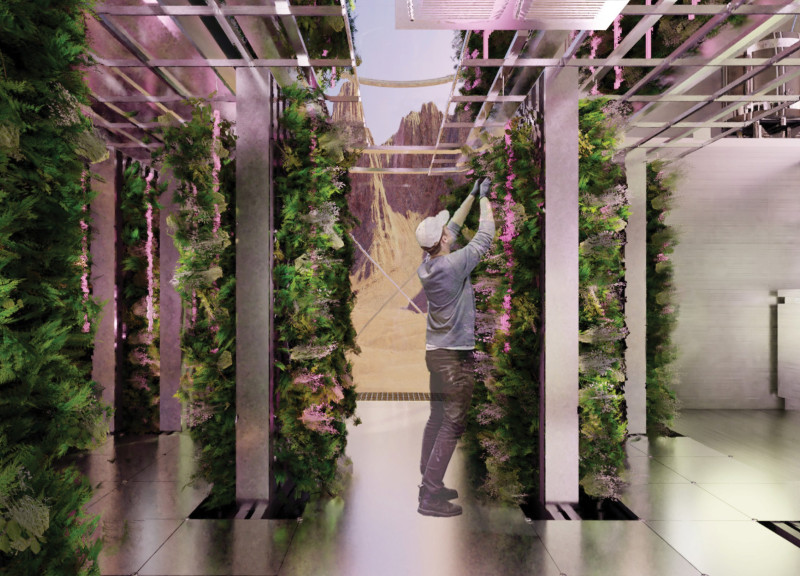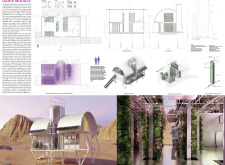5 key facts about this project
OASIS MODULE is an initiative located in the Argentine sector of the Lithium Triangle, a region known for its large lithium reserves and high potential for solar energy. The setting underscores the project's purpose: to tackle the increasing rates of homelessness and poverty, particularly in densely populated areas like Buenos Aires. The design concept revolves around self-sufficient living that incorporates sustainability and adaptability, responding to the urgent need for accessible housing.
Design Concept
At the heart of OASIS MODULE is the use of hydroponic systems within living spaces. These systems enable residents to grow their own food, including medicinal and aromatic plants. This feature not only promotes food security but also fosters a connection with nature. The integration of such systems enriches the living experience and encourages environmentally friendly practices.
Modular and Adaptive Structure
The design emphasizes a modular approach, allowing for flexible living arrangements. This flexibility is vital in urban environments where families and individual needs can change over time. By offering adaptable spaces, OASIS MODULE addresses the diverse demands of contemporary life, making it suitable for various family sizes and lifestyles.
Sustainability Features
Sustainability is a key focus, highlighted by the choice of materials and architectural elements. The structure includes a double-layer stainless steel roof for strength, double-pane insulated glass windows for better energy efficiency, and solar panels to provide power. Additionally, rainwater gutters and an energy recovery ventilator help conserve resources and improve indoor air quality. Each feature contributes to an overall reduction in the building's environmental impact.
Living Spaces and Community Interaction
OASIS MODULE promotes communal living by creating shared spaces that encourage social interaction while also allowing for private retreat. Balancing these aspects is important in urban settings, as it supports community ties. This design not only serves as housing but also as a place where residents can engage with one another, fostering a sense of belonging.
The integration of nature and technology offers a living environment that is both functional and inviting. Interior hydroponic systems bring greenery indoors, making living spaces more pleasant while emphasizing the importance of sustainability. This design ultimately marries modern living with ecological awareness.



















































